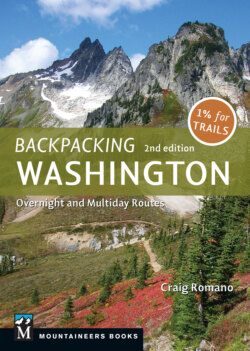Читать книгу Backpacking Washington - Craig Romano - Страница 27
На сайте Литреса книга снята с продажи.
The Ten Essentials
Оглавление1.Navigation (map and compass): Carry a topographic map of the area you plan to be in and know how to read it. Likewise, a compass or GPS unit is quite useful.
2.Sun protection (sunglasses and sunscreen): Even on wet days, carry sunscreen and sunglasses; you never know when the clouds will lift. At higher elevations your exposure to UV rays is much more intense than at sea level. You can easily burn on snow and near water.
3.Insulation (extra clothing): Carry raingear, wind gear, and extra layers.
4.Illumination (flashlight/headlamp): Carry extra batteries too.
5.First-aid supplies: At the very least your kit should include bandages, gauze, scissors, tape, tweezers, pain relievers, antiseptics, and perhaps a small manual. Consider first-aid training through a program such as MOFA (Mountaineering Oriented First Aid).
6.Fire (firestarter and matches): Be sure you keep your matches dry. Resealable plastic bags do the trick.
7.Repair kit and tools (including a knife): A knife is helpful; a multitool is better. A basic repair kit should include such things as nylon cord, a small roll of duct tape, some 1-inch webbing and extra webbing buckles (to fix broken pack straps), and a small tube of superglue. Safety pins can work wonders too.
8.Nutrition (extra food): Always pack more food than you need for your hike. Bring energy bars for emergency pickme-ups.
9.Hydration (extra water): Carry two full water bottles, unless you will be hiking entirely along a water source. Carry iodine tablets or a filter too.
10.Emergency shelter: This item can be as simple as a garbage bag, or something more efficient such as a reflective space blanket. A poncho can double as an emergency tarp.
